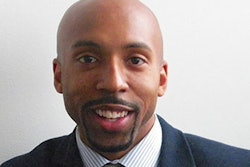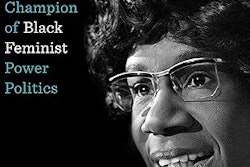Higher education is one of the most powerful assets our state has to uplift families, support businesses, and create prosperity. A credential earned after high school changes an individual’s career trajectory and typically leads to higher wages and more stable employment. And it is not just about a job. Graduates of higher education have increased volunteerism, improved health outcomes, and lower incarceration rates. In short, the relationship between higher education and sustained prosperity for families and communities is undeniable.
However, while our higher education system has this transformational power, it has not always been leveraged to its full potential. Historically, higher education has underserved many Kansans. For example, nearly 17% of 18-to-24-year-old Kansans are Hispanic. Yet less than 12% of resident 18-to-24-year-old students enrolled in our public universities are Hispanic. We see similar enrollment gaps for African American students, rural students, and low-income students.  Dr. Blake Flanders
Dr. Blake Flanders
It is not merely enrollment that is an issue. About 60% of our state university students graduate within six years. Yet that rate drops to less than 48% for Hispanic students, 43% for African American students, and 31% for Native American students. Students receiving Pell grants have graduation rates 21 percentage points lower than students who are not Pell-eligible. Though typically less pronounced, graduation gaps also exist at community and technical colleges in our state.
Higher education leaders face an obligation to Kansas families to remove barriers to access and success and ensure that our system lives up to the ideal of equal opportunity for all. And I’m not talking about “starting a conversation about it.” We need bold action now because we cannot continue to underserve these students and fail to build the talented workforce Kansas needs.
What is the best approach to embracing the increased diversity of our communities and ensuring opportunity? Is it hiring a cabinet-level diversity officer with few resources and narrow authority? Is it developing boutique programs on each campus for diverse, first-generation students? Is it including the importance of diversity in each address? Although these actions are helpful, they have not moved the needle toward closing access and success gaps. Structural change is needed.
Feeling the weight of this moral and economic imperative, the Kansas Board of Regents has made closing opportunity gaps in enrollment and graduation and increasing the success of all students a high-level priority in our system’s strategic plan, Building a Future. We are implementing proven, promising practices to improve access and graduation rates for all students.
One of the first significant initiatives the board undertook to improve student success was the development of a systemwide general education framework. Community colleges have historically served as an entry point into higher education for underserved populations. However, we have heard from students that there are sometimes significant hurdles to transferring from a community college to a state university while staying on track to graduate. The general education framework will ensure that students have a clear pathway to transfer with their general education requirements completed.
The regents have strengthened their partnership with the Kansas State Board of Education to begin improving access at the high school level. We have collaborated with the State Board to introduce completion of the Free Application for Federal Student Aid (FAFSA) as a graduation requirement, which greatly increases the odds a student will apply to college. We are also working together to place dedicated college advisors in Kansas high schools through the Kansas State College Advising Corps. These advisors help students apply to any colleges of their choosing and are a tremendous asset to first-generation students who often find the application process daunting.
Of course, many have rightfully said that access without success is an empty promise. Ensuring students have the tools and resources needed to achieve success once they are in our system is equally important.
Last year, we contracted with the National Institute for Student Success to assess graduation and retention gaps at the state universities and at one community college and develop customized playbooks for each institution to close their gaps. Common recommendations included improved advising services, guided pathways for students, and proactive, targeted financial aid and completion grants. We are driving the full implementation of these recommendations with speed because the board and our institutions know that incremental effort hasn’t worked. It is time for transformative system change.
In Kansas, we are fortunate to have great partners. Gov. Laura Kelly and the Legislature have supported key initiatives to improve access and success for first generation students, including significant increases to need-based student financial aid. We have moved beyond merely talking about how we value diversity by prioritizing an action-oriented approach with concrete policies and initiatives that will create meaningful, measurable change. Our goal is to become the first higher education system to provide an equal opportunity for all to obtain a college education and achieve their professional and personal goals.
Dr. Blake Flanders serves as president and CEO for the Kansas Board of Regents.
The Roueche Center Forum is co-edited by Drs. John E. Roueche and Margaretta B. Mathis of the John E. Roueche Center for Community College Leadership, Department of Educational Leadership, College of Education, Kansas State University.



















